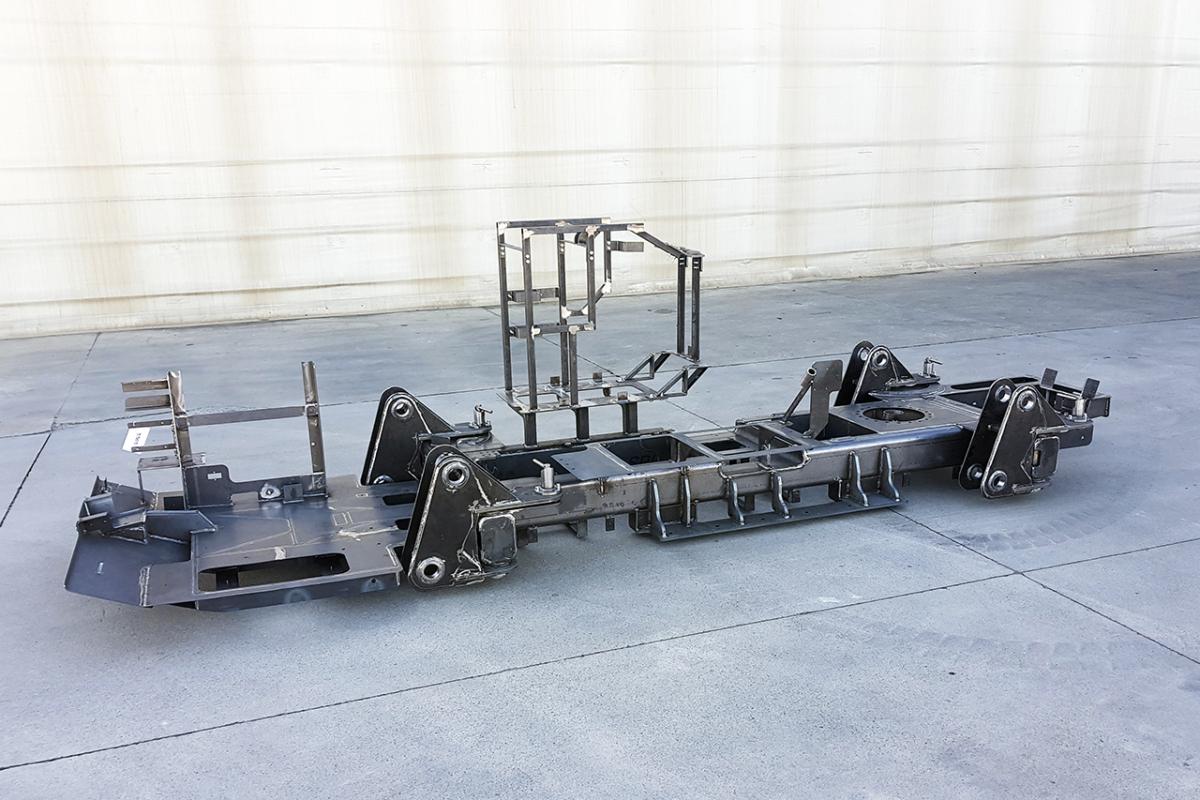High strength steel: properties and benefits
Everything you need to know about high strength steel: properties, advantages and applications in metal fabrication
High-strength steel represents one of the most widely used materials in the field of metal carpentry, both light and heavy. It is a steel characterized by high mechanical strength and an excellent ratio of weight to performance, qualities that make it ideal for structures subject to high loads or requiring high stability with reduced material thicknesses. Its particular chemical composition gives the material not only great toughness and plastic deformation capacity, but also considerable resistance to corrosion.
In the light carpentry sector, this type of steel allows the creation of resistant and light structures, such as frames, roofs, facades and scaffolding, reducing the overall weight without compromising safety. In heavy carpentry, however, the material is often used for the construction of bridges, industrial buildings, infrastructures and machinery subject to high stress, where its mechanical properties guarantee durability, reliability and resistance to cyclical stresses and environmental agents.
The use of high-strength steel therefore represents a significant evolution compared to traditional steels: it makes it possible to design higher-performance, safer and more durable structures, responding to the growing needs for structural efficiency, sustainability and innovation that characterize the modern carpentry sector. Let’s see in more detail what high-strength steel is, its main advantages and its main industrial and civil applications.
What is meant by high-strength steel?

As we have seen, high-strength steel is a metal alloy designed to offer high mechanical strength and good ductility. The result of in-depth studies in the metallurgical sector, it represents an advanced type of steel that ensures significantly higher mechanical resistance than common steels, with increases that generally vary from 60% to 125%. In practical terms, when the same force is applied to a high-strength and a traditional steel, the former shows considerably less deformation.
The production of high-strength steel occurs through various processes. The most popular method involves adding specific elements to the alloy, such as chromium, nickel, molybdenum, manganese, vanadium or titanium. These components improve robustness, increase tensile strength and enhance their anti-corrosion properties.
Another common technique is heat treatment, especially quenching, which involves heating the steel to high temperatures, followed by rapid cooling in water or oil. This process changes the microscopic structure of the metal, creating martensite, an extremely hard phase that significantly increases hardness and strength. To further optimize these properties and reduce brittleness, quenching is often followed by an additional process called tempering.
What are the types of high-strength steel?
In addition to the production techniques just illustrated, it is also important to know the most widespread types of high-strength stainless steel:
- HSLA: high-strength low-alloy steel, is characterized by a better ratio between strength and weight than traditional steels thanks to the addition of small quantities of elements such as phosphorus, copper and nickel;
- UHSS: ultra-high strength steel, stands out for its excellent strength-to-weight ratio and is ideal for applications that require a high capacity to withstand significant loads. It is produced by integrating carbon, manganese and silicon into its composition;
- AHSS: advanced high-strength steel, is a composite alloy that combines different qualities of resistant steels, thus offering remarkable structural solidity, wear resistance and high corrosion protection.
What is the strongest steel?
Stainless steels, as materials characterized mainly by their extraordinary ability to resist corrosion, are considered the most resistant. This characteristic derives from the significant presence of chromium (in percentages between 10% and 20%), which, together with iron, represents the dominant alloying element.
The distinction between the various types of stainless steel depends mainly on the variation in the proportions of further elements such as carbon, silicon and manganese. These compositional differences determine various categories of stainless steel, among which austenitic stainless steels are distinguished by importance, commonly identified as A2 and A4 stainless steel.
All the advantages of high-strength steel
Choosing high-strength steel for the construction of metal structures and high precision metal components ensures numerous technical and performance advantages.
First of all, it allows you to significantly reduce the thickness of the material, thus obtaining lighter components without compromising robustness. Furthermore, high-strength steel offers a notable ability to withstand both tensile and compressive stresses, and is therefore perfect for the creation of structures and components that must guarantee maximum reliability and mechanical resistance over time. As a result, an increase in the capacity of the structures is achieved, which are able to support higher loads than traditional materials.
Another key aspect is safety: the ability to withstand high loads significantly reduces the risk of sudden structural failures, thus increasing the reliability and durability of components and structures. This type of steel also has excellent corrosion resistance and is therefore particularly suitable for use in outdoor or particularly aggressive environments. Finally, the hardness and durability of this material make it an ideal solution for components subjected to intense and prolonged mechanical stress, guaranteeing superior durability over time and fewer maintenance interventions.
High strength stainless steel applications
High strength stainless steel applications range across numerous industrial and civil sectors, offering specific solutions based on design needs. Among the main sectors benefiting from the use of this type of steel we find:
- aerospace industry: high-strength steel is critical in making critical structural components, including engines and parts exposed to high temperatures and mechanical stress, ensuring safety and reliability on space missions;
- marine industry: this type of steel is particularly appreciated in shipbuilding for its ability to resist the corrosive marine environment, ensuring longevity and robustness of marine structures;
- construction: finds wide use in the construction of buildings, bridges and large infrastructures, thanks to its excellent ability to withstand high loads and guarantee stability and safety over time;
- automotive industry: widely used to reduce the overall weight of cars, thus contributing to fuel efficiency and significantly increasing passenger safety in the event of accidents;
- production of machinery and tools: used by the manufacturing industry to create highly wear-resistant tools and machinery, ideal for intensive use and extremely demanding production environments;
- precision components: high-strength steel is essential in the creation of small but highly reliable parts used in various industrial sectors, where precision and resistance are essential requirements.

Ferrero Industrial, specialized in the production of metal carpentry for different industrial sectors, uses carefully selected materials, such as stainless steel and high-strength steels, to create metal structures and precision components of the highest quality, designed to resist atmospheric agents, corrosion and the most difficult working conditions. Specifically, we produce components for industrial vehicles, telehandler parts, aerial work platform equipment and components for drilling machines, but also car carrier trailer parts and smart waste bins components with advanced production technologies and cutting-edge machinery, to offer products that are capable to resist the most demanding stresses and last a long time.
If you would like to find out more about Ferrero Industrial products made with high-performance steels, or request specialized advice, contact us for more information!




